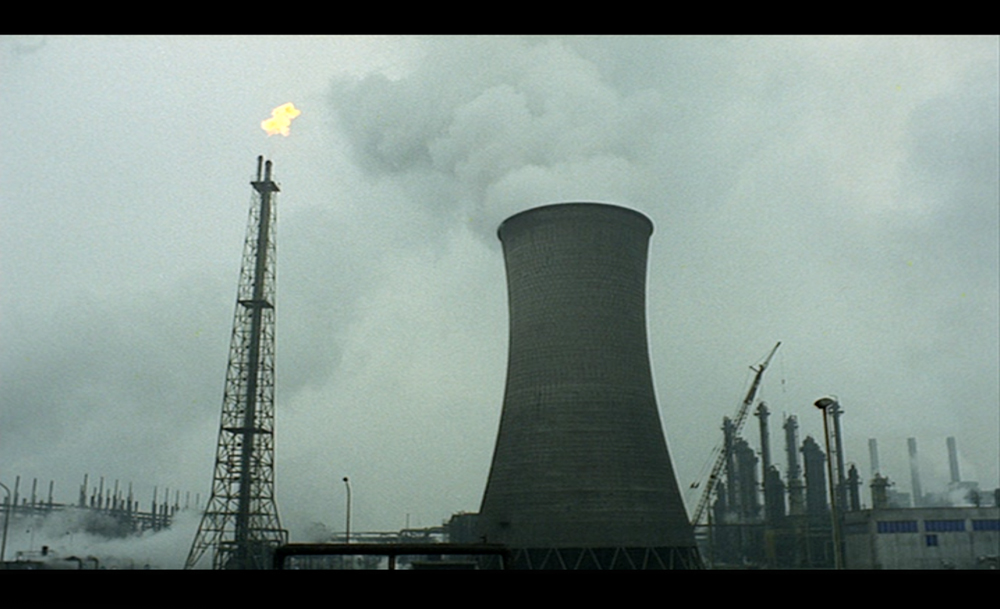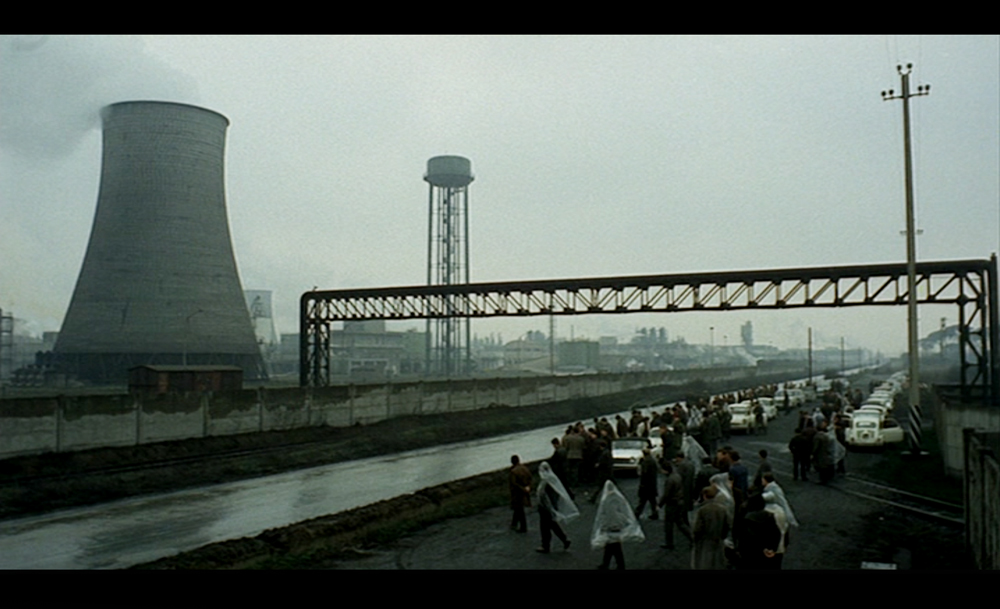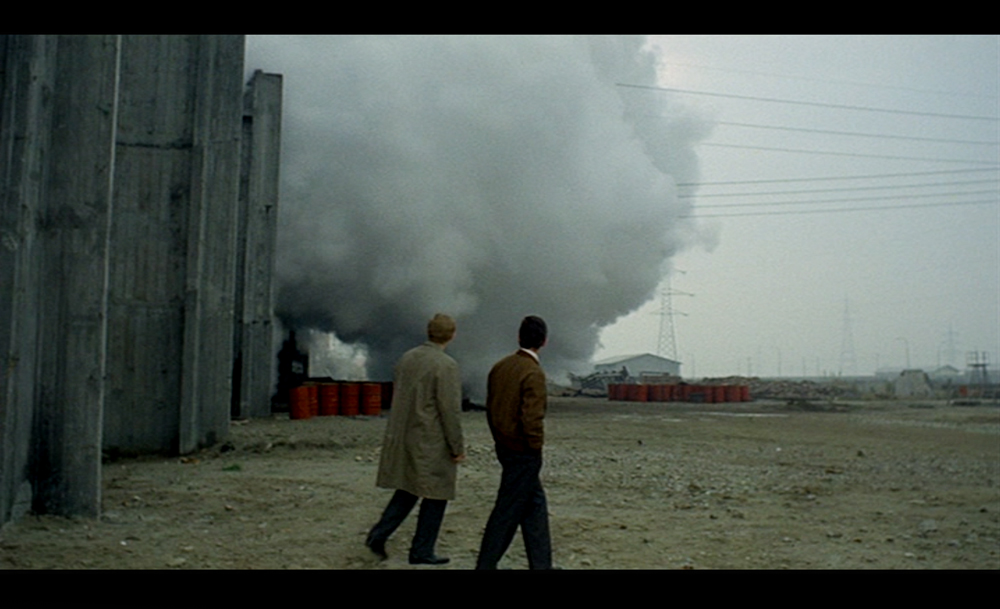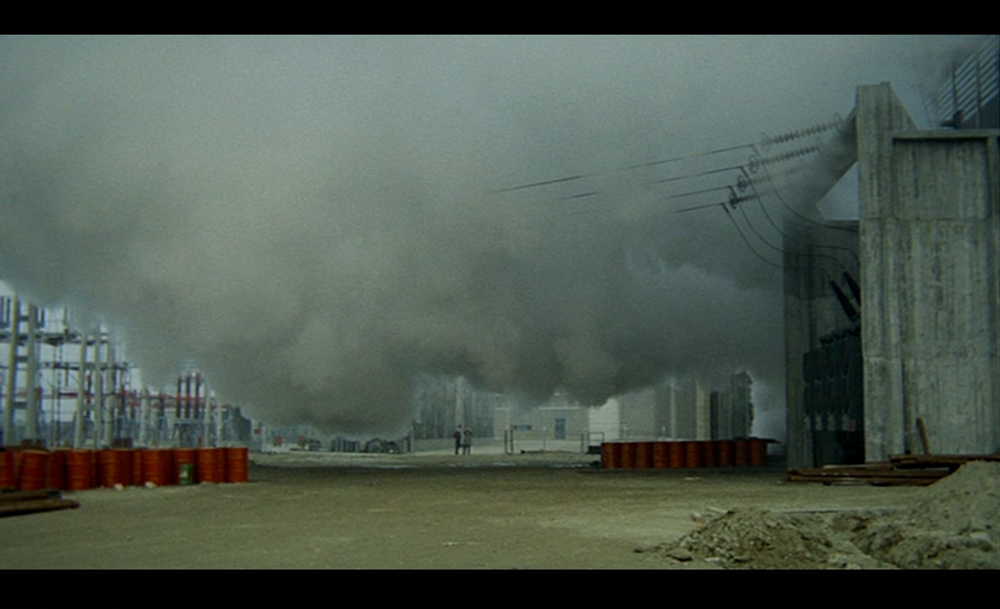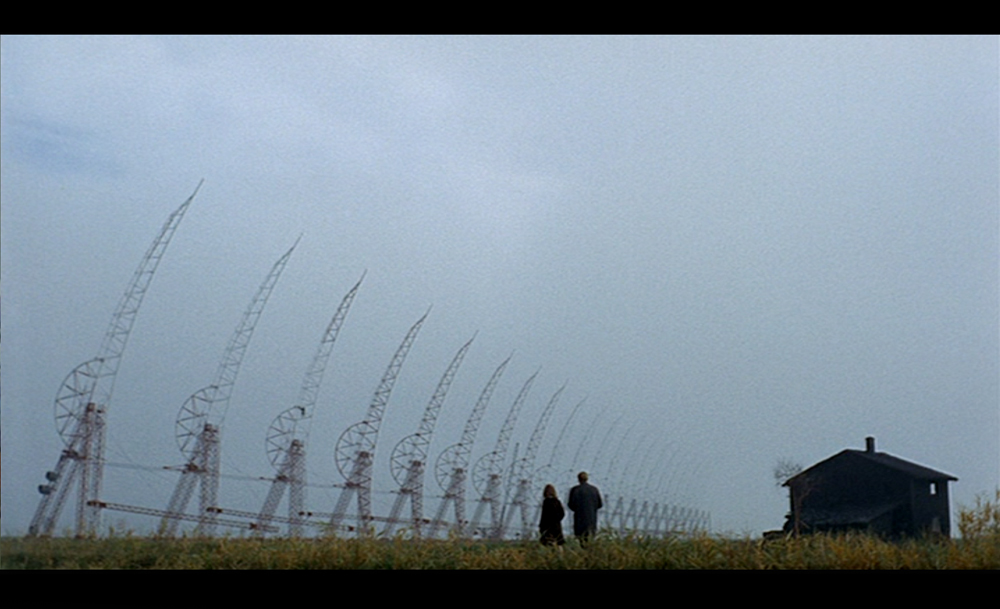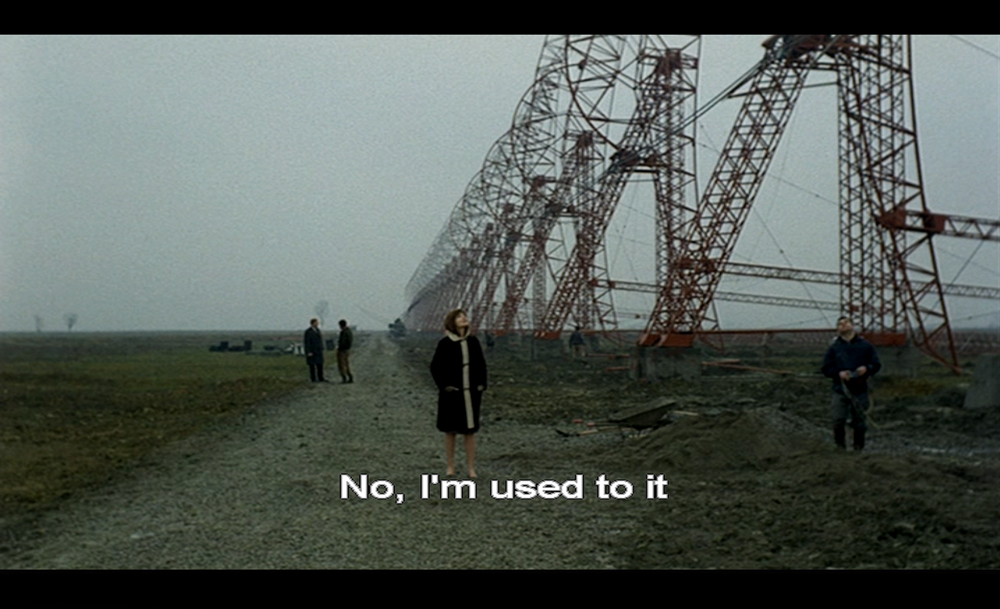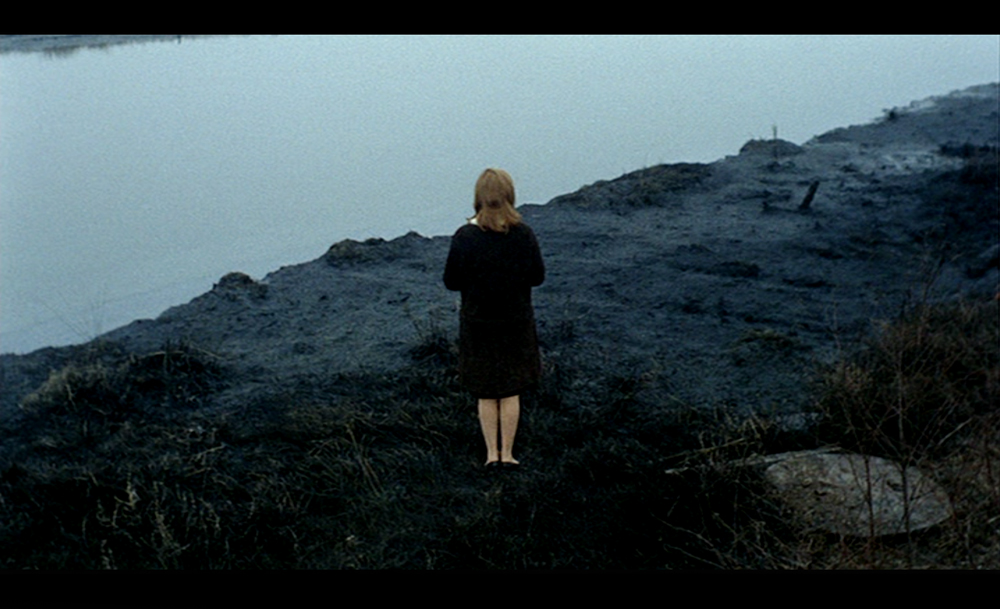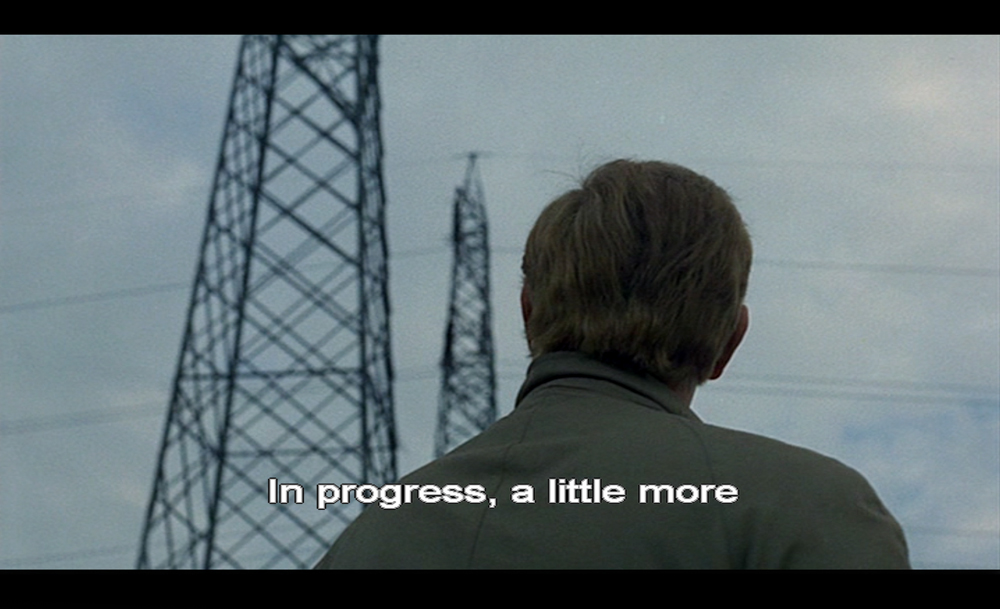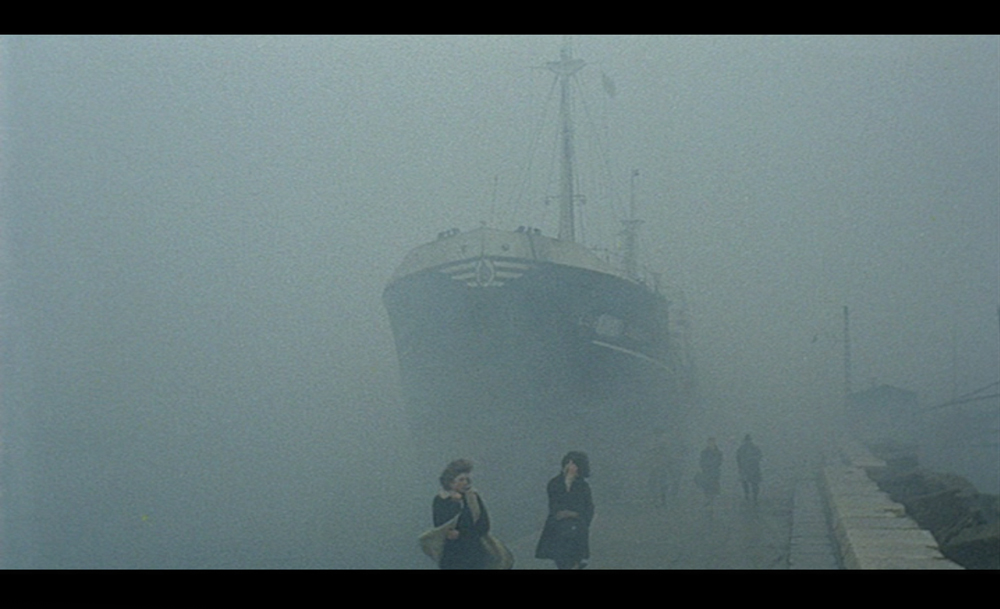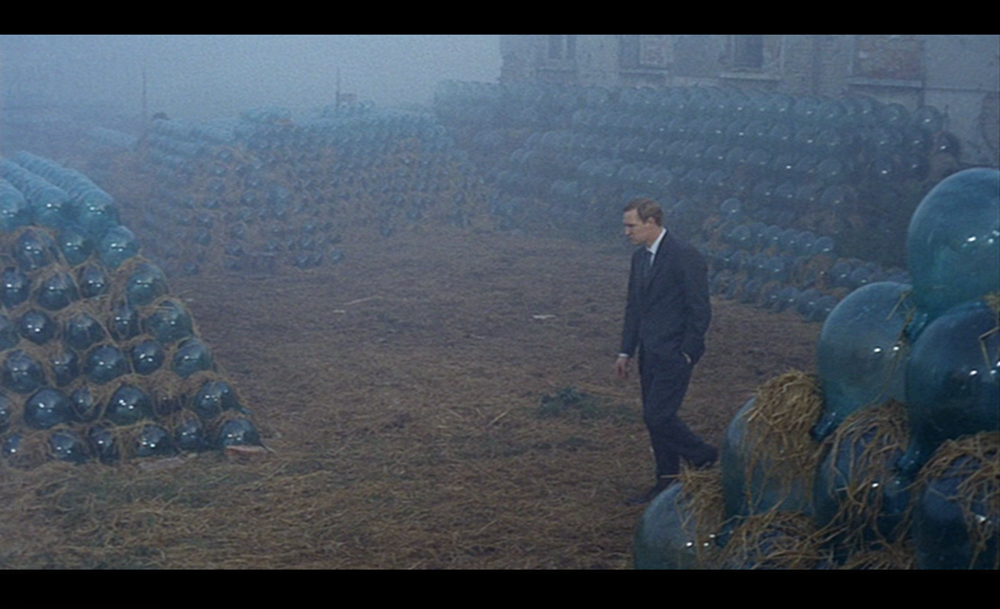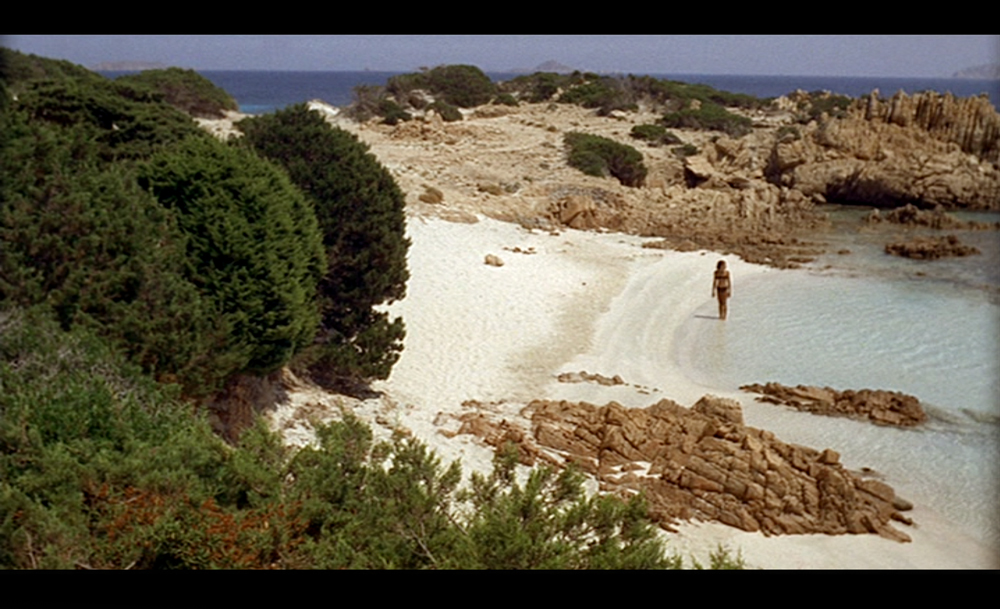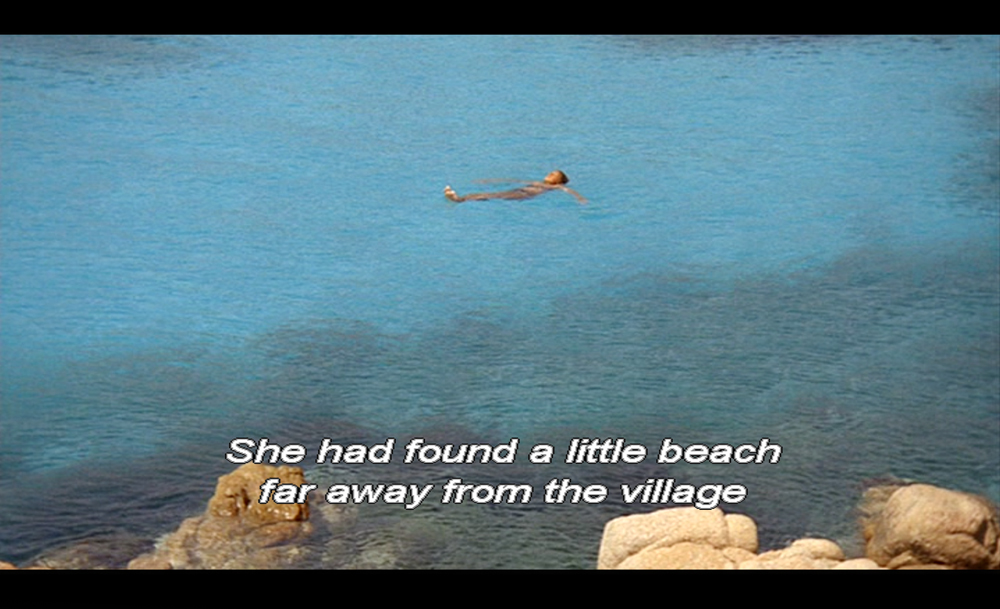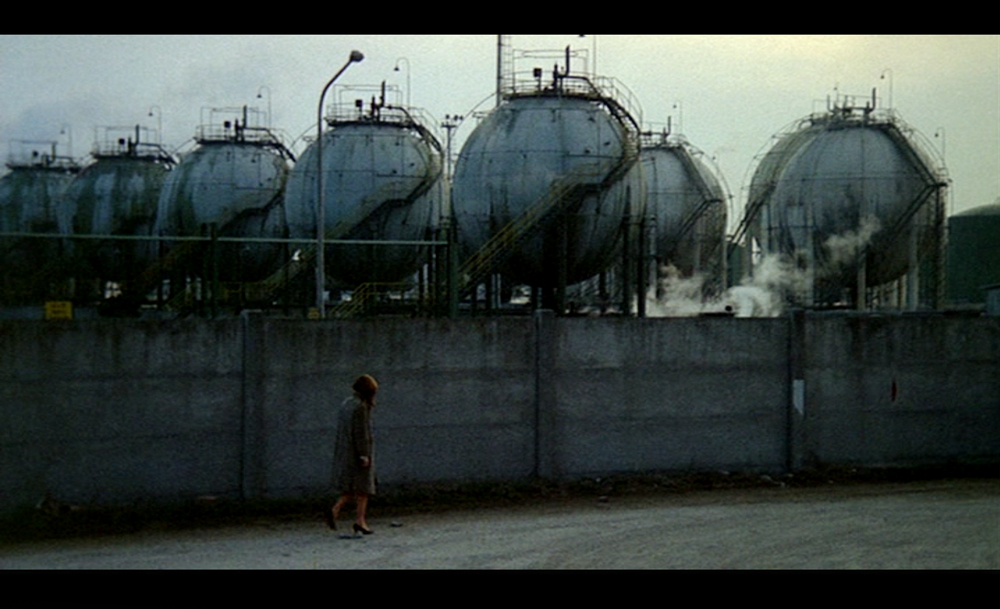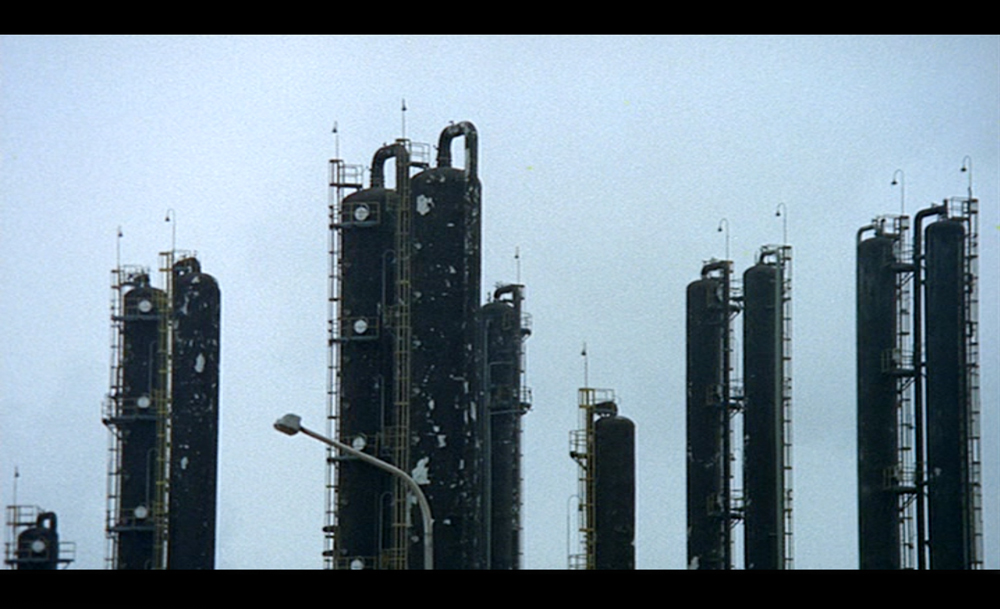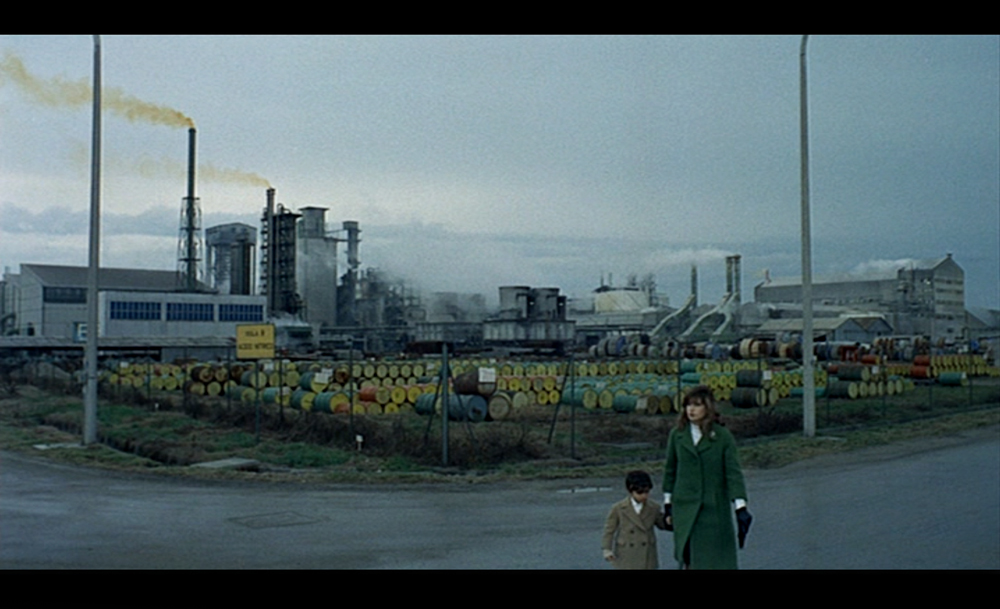Artist Blog
Every week an artist whose single image was published by Der Greif is given a platform in which to blog about contemporary photography.
Red Desert
May 14, 2015 - Conor Clarke
Hello. Firstly, thanks to Der Greif for the opportunity to share some pictures and films! I'll be sharing a series of screen grabs from films that people have shared/recommended/spoken about after viewing my work 'In Pursuit of the Object, at a Proper Distance'. Needless to say, the films are set amongst largely industrial regions. First is Il deserto rosso (Red Desert) by Michelangelo Antonioni, released in 1964. This carefully composed film is set around a petrochemical factory on the east coast of Italy in the 1960s, Antonioni uses deliberate and controlled use of colour and sound to create a beautifully uncomfortable picture of industrialisation and its social and environmental impacts. He exaggerates the feeling of a world altered by industry, where people wearing dull clothing move about in a functional, monochromatic landscape. Humans appear alien in an environment they are responsible for creating. Industrial progress is inevitable, we must either compromise or suffer. The main character in the film is Giuliana, an anxiety-ridden woman who's unable to adapt. '… The neurosis I sought to describe in Red Desert is above all a matter of adjusting. There are people who do adapt, and others who can't manage, perhaps because they are too tied to ways of life that are by now out-of-date' - Antonioni The landscape appears other-worldly, alive, exotic and fascinating. Colourful structures and smoke cut through the dull scenery; red, yellow and rusty-orange emphasise the beauty and strangeness of this place. '…to translate the poetry of the world, in which even factories can be beautiful. The line and curves of factories and their chimneys can be more beautiful than the outline of trees, which we are already too accustomed to seeing. It is a rich world, alive and serviceable' - Antonioni We view this landscape through Giuliana's eyes, and the discomfort she feels is enhanced by the techniques used during filming. It was shot using cool filters during hostile winter months. Vegetation was often burned prior to shooting, and large areas of land, trees and streets were spray-painted in dirty grey, brown, dull-green or black. '…the law of beauty doesn't lie in the truth of nature' - Antonioni The only unaltered scenery is the fantasy sequence; where Giuliana describes to her son a story of a small girl on an island without people. It is sunny here, with pink sand and crystal clear water. Although this is an imagined place that doesn't exist in Giuliana's reality, the sequence was shot with truth to nature in terms of colour, whereas the daily industrial scenes are highly modified. The island sequence is her idea of an idyllic landscape, of a picturesque Italy. Her daily life however feels claustrophobic, Giuliana feels trapped. Distances are often blocked by steam, smoke, walls or fog, appearing flat, like paintings. The soundtrack enhances this uncomfortable feeling, using recorded industrial sounds, fog horns and an electronic score. They are conflicting sounds, soothing and uncomfortable, repetitive and suddenly shrill, mechanical but at times human-like. They can be disorientating, menacing, but at the same time familiar and grounding. They remind me of my times in the Ruhrgebiet (Ruhr area in west Germany) where I spent a lot of time photographing power and coking plants. The sounds of industry can get into your head, I could still hear them long after leaving the area. The Ruhrgebiet is another idea of otherness, of a post-industrial picturesque. Thanks to Kate Brettkelly-Chalmers for the film recommendation! [embed width="1000" height="563"]https://youtu.be/pMHNRfTPfQE[/embed]


